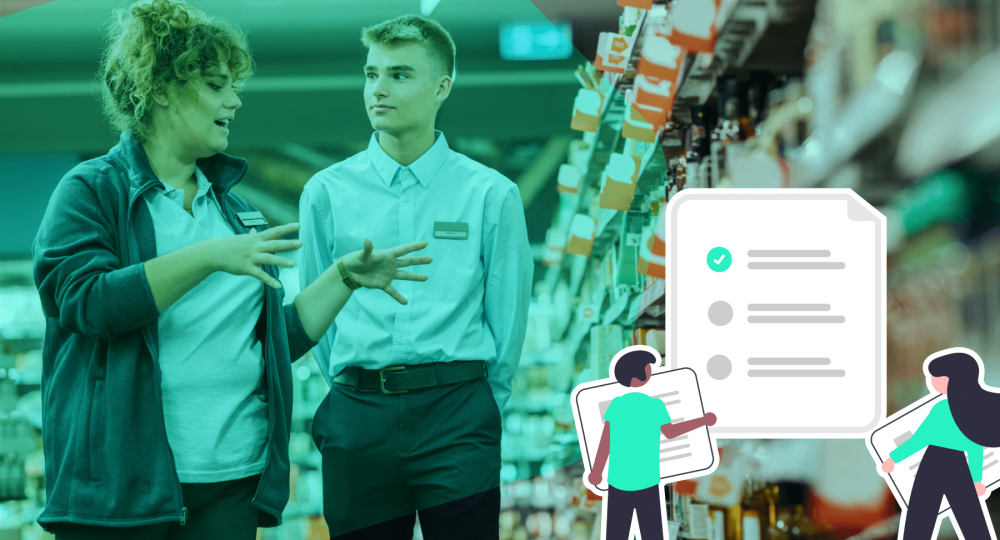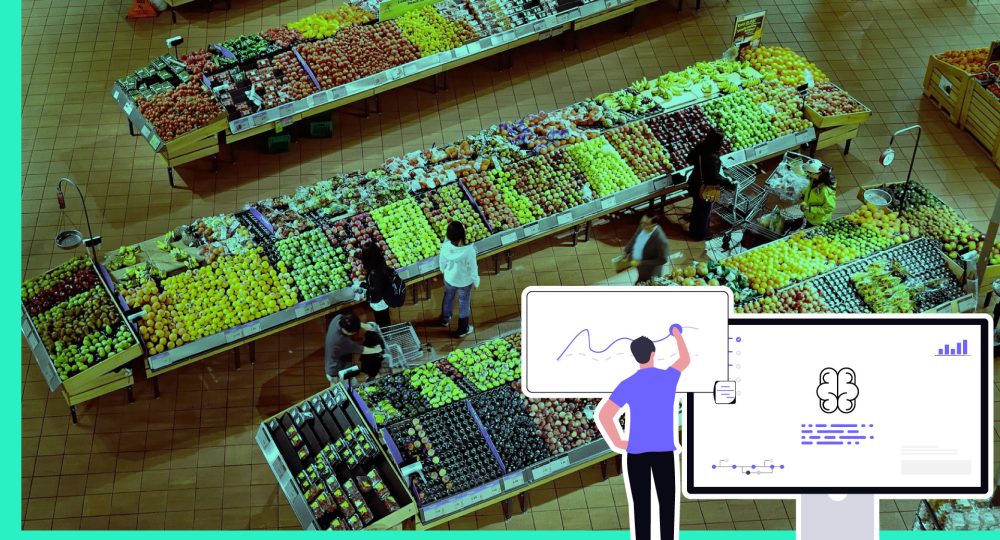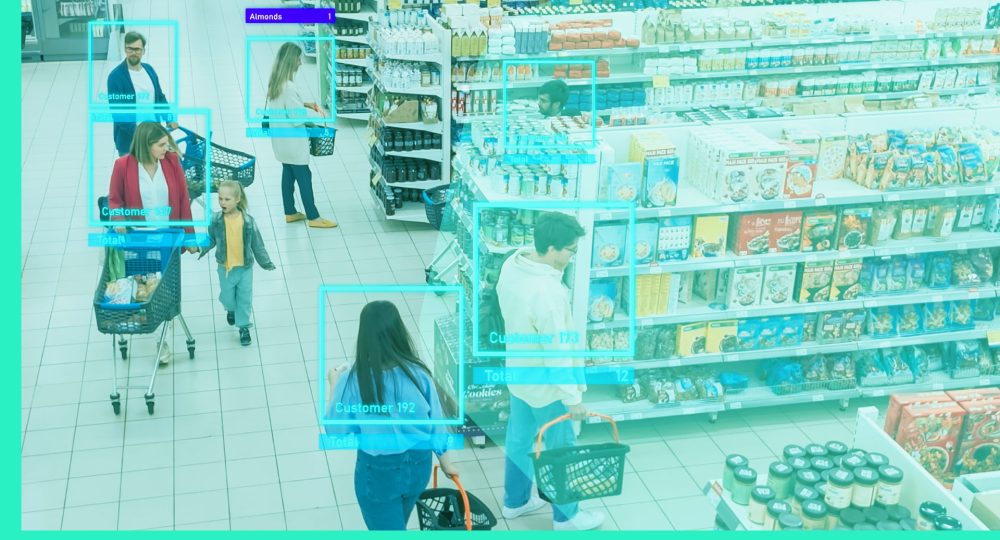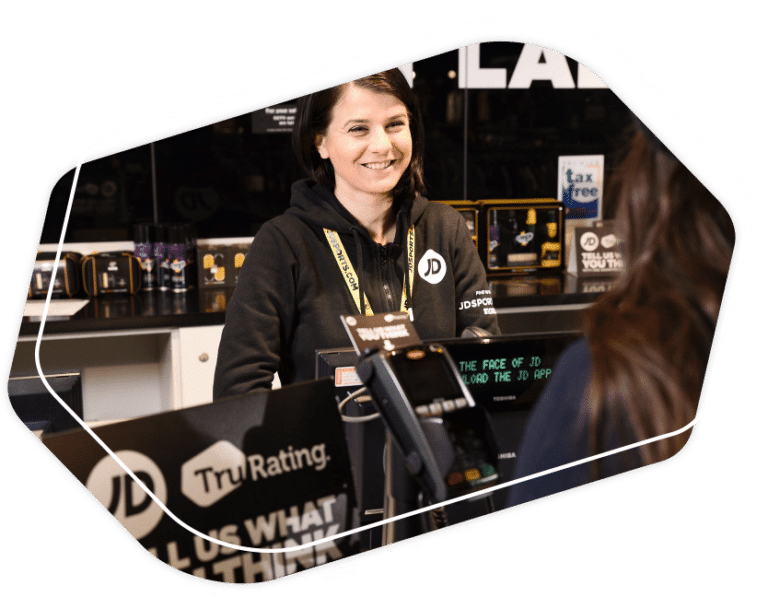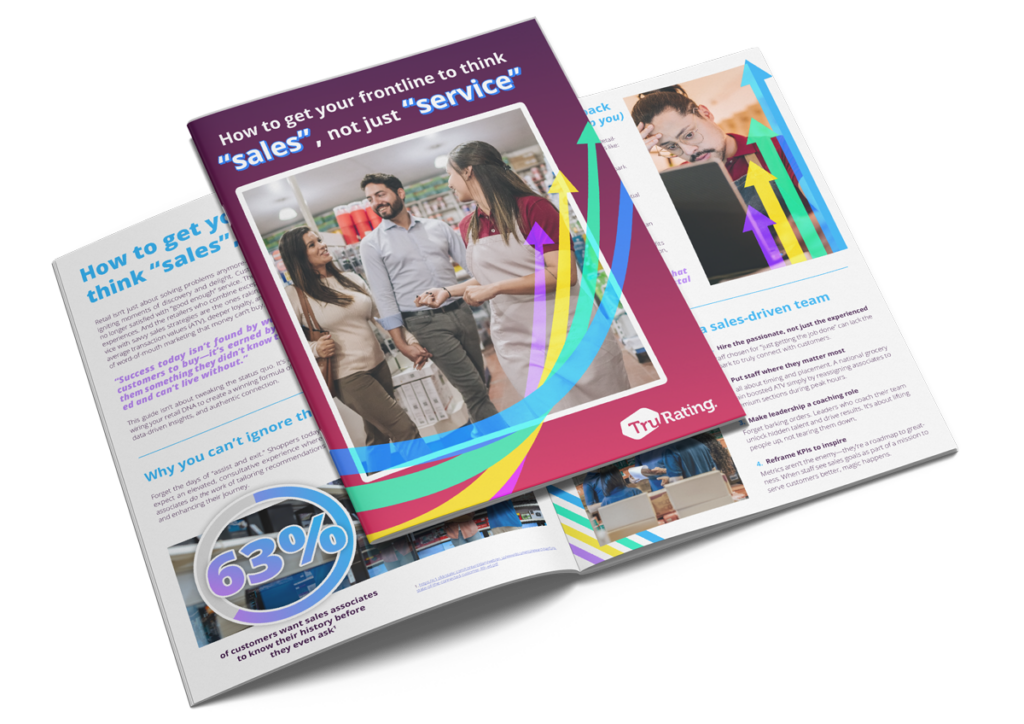The pandemic caused warp-speed digital acceleration across the retail industry but for all the talk of ’10 years of innovation in 10 months’ – a lot of this growth was catch up, an industry scrambling to deal with the ramifications of closed shop doors and uniquely novel needs – particularly in the case of the in-store experience.
While much of this work was necessary and important – physical retail continues to offer a unique stronghold as a place for innovative customer engagement.
This article focuses on the four key drivers that TruRating has identified as contributing the most to building a more engaging in-store experience – perhaps pointing a way forward for the future of the store in 2022 and beyond.
The data presented here was collected between July – September 2021, across channels, from retailers in the UK, North America, Australia, and New Zealand.
In-Store Experience Driver #1 – Technology
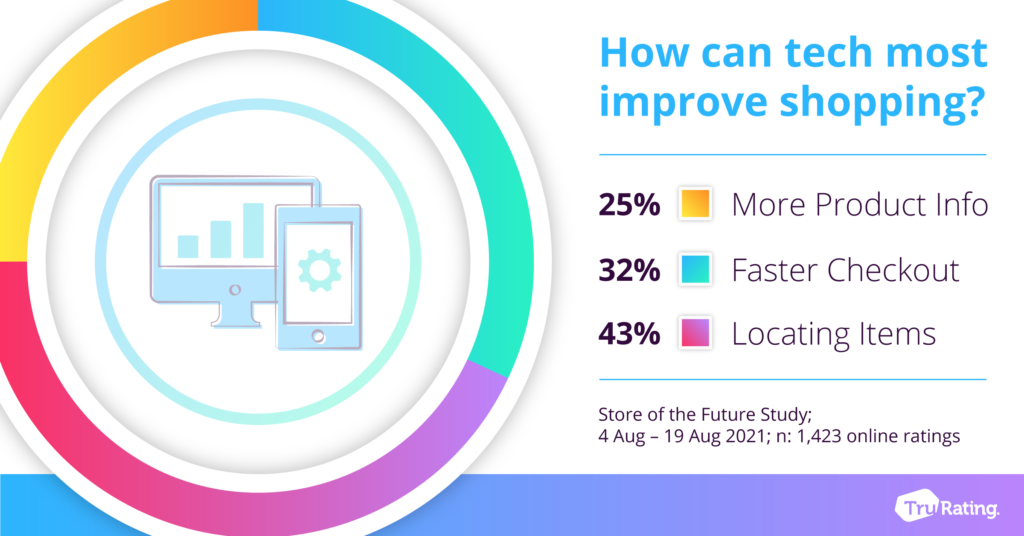
Tech is ubiquitous in retail but knowing exactly where to invest is not easy. Digital upgrades made during the pandemic were often functional, forced investments required to simply stay in business.
When we asked consumers how tech could most improve shopping, we saw nearly half answered Locating Items followed by Faster Checkout and More Product Info. While it can be tempting to see tech as a cost-cutting efficiency, helping customers to achieve their goals in-store is just as important – and tech offers a potential solution in lieu of staff shortages.
The data shows that retailers who have invested in upgraded store apps, or smart shelving solutions, are well aligned with contemporary customer expectations.
Driver #2 – Staff
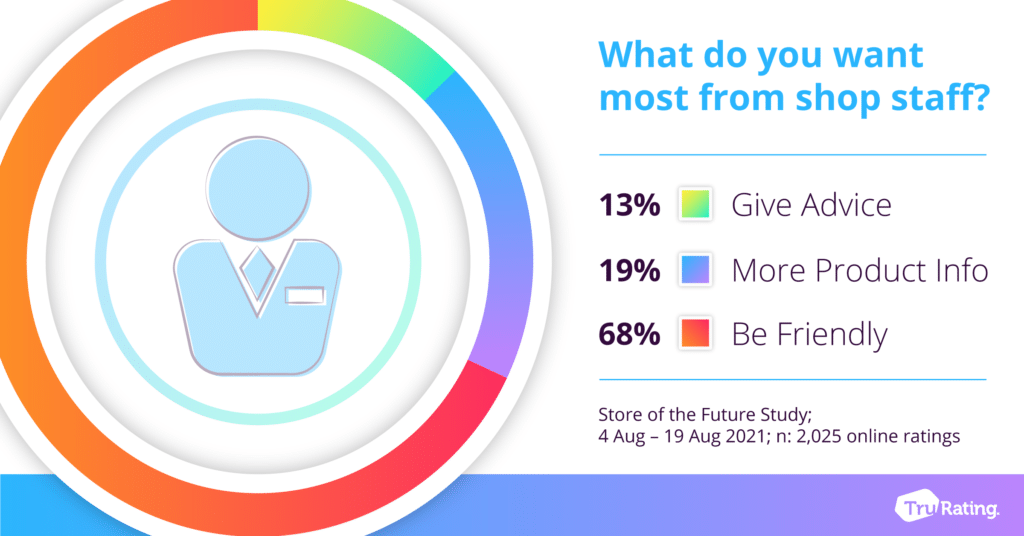
While technology may help provide a functional utility important to meeting the basic needs of shoppers, when it comes to staff, the human touch is not to be underestimated.
TruRating research identified a staggering 68% of consumers most want staff to be friendly. While providing helpful and knowledgeable service is often considered de facto to be a key factor for hiring, the data suggests that personality is just as important.
In a time where recruiting and keeping staff is challenging, to say the least, retailers who can successfully attract, retain, and motivate staff to truly engage customers in a positive way, should be better positioned to weather the shifting tides of consumer needs.
Driver #3 – Customer Experience
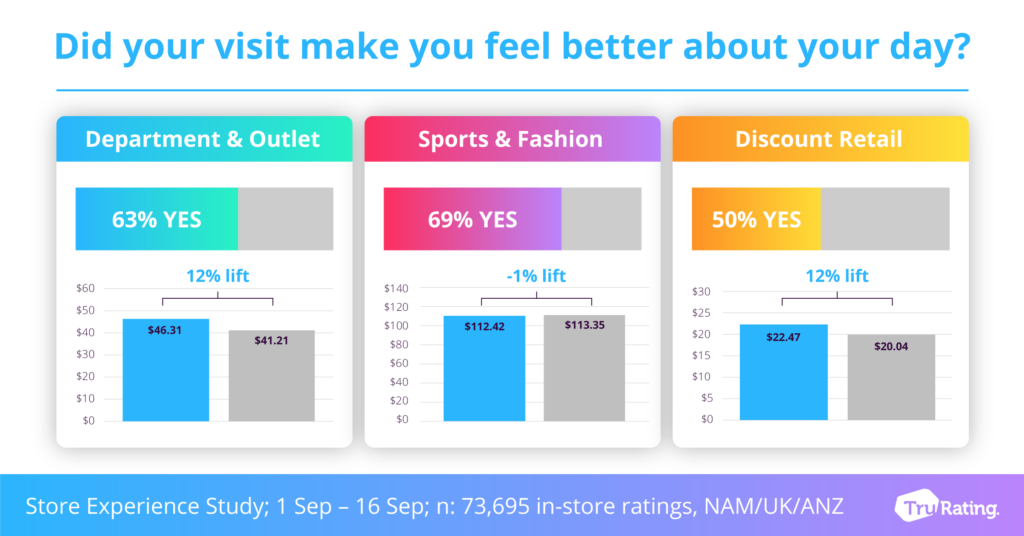
When we asked the questions, “Did your visit make you feel better about your day?’ across three verticals with vastly different customer experiences, we saw a significant variation in results suggesting not all shopping missions are equally rewarding.
69% of those in Sports & Fashion – typically a more discretionary, ‘fun’ experience – reported a positive response to the experience, whereas only 50% of customers shopping in Discount reported a similar reaction.
While intuitively this might make sense, across sectors, wherever a more positive sentiment was reported, we saw a clear correlation with increased basket and spend – an opportunity for all retailers.Driver #4 – Emotional Connection

In a recently published research paper (Mapping the State of Consumer Loyalty, October 2021) TruRating surveyed consumers to understand the modern drivers of customer loyalty. A critical finding was that building an emotional connection with consumers is one of the keys to sustained loyalty.
TruRating data found that while 54% of consumers say loyalty programs influence their shopping habits, 77% now consider brand values before they make a purchase. For retailers assessing their strategy for the year ahead, this provides an interesting takeaway.
Building real loyalty with your customers in 2022 is about more than simply offering discounts or points. Technology, staff, experience, and even ethical considerations all play a role – with the store offering a potential touchpoint to innovate and experiment across each of these touchpoints.
Looking Ahead
While 2020-21 saw rapid innovation in the retail sector, change continues to happen at what feels like a near-daily clip of movement. Technology continues to become more affordable and influential, but the desire for experiencing authentic human connections is just as critical – especially in a world slowly emerging from the isolation of pandemic conditions.
For retail, the ongoing basic question is, how do I continue to put the consumer at the heart of my decision-making process? While creativity, innovation and shiny tech will always be exciting – ensuring your innovation aligns with your customer needs is the check and balance all businesses must keep in sight.
Continually testing, evolving, and checking back with your customers on a regular basis is the key to customer-driven innovation. As seen above, the store and staff remain critical to helping drive authentic human connection, unique strength of the in-store experience that cannot always be replicated online.
As we move into a new year, with a new set of challenges and complexities, we look forward to seeing retailers grow and adapt to meet a future state of play we’ve only just begun to witness.
*this is an updated version of an article originally appeared as part of the Retail Week Live showcase in London in October of 2021


